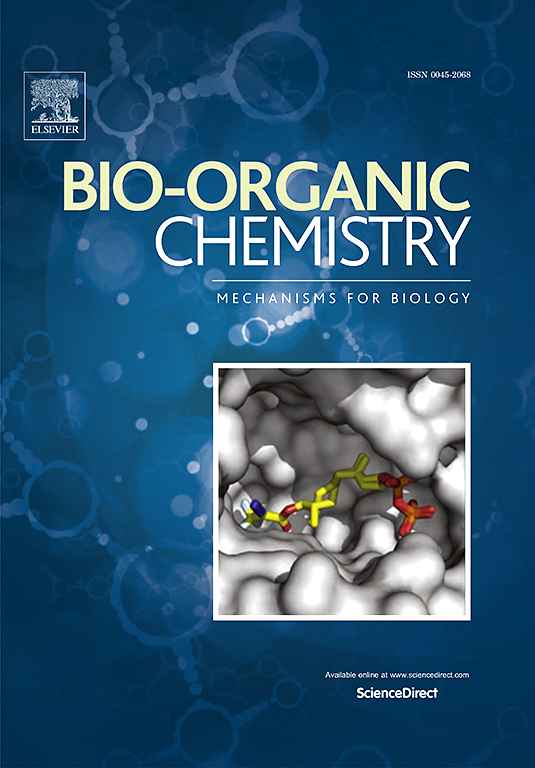Exploring Thieno/Furo[2,3-b]pyridines as new scaffolds for potential FAK inhibition: Design, synthesis, biological evaluation and in silico studies
IF 4.5
2区 医学
Q1 BIOCHEMISTRY & MOLECULAR BIOLOGY
引用次数: 0
Abstract
Focal adhesion kinase (FAK) is a non-receptor tyrosine kinase that plays a vital role in regulating cancer cell survival, proliferation, migration, and angiogenesis. Aiming to explore new potent inhibitors, a series of thieno/furo[2,3-b]pyridine derivatives was designed and synthesized. The newly synthesized compounds were evaluated for their in vitro anti-proliferative activity against human liver (HUH-7), lung (A549) and breast (MCF-7) cancer cell lines, in addition to their cytotoxic activity against normal lung cell line (WI-38) to predict their safety profile. Seven compounds (4a, 4c, 5, 6, 10c, 11 and 12) displayed significant anti-proliferative activity as well as high selectivity towards the tested cancer cell lines (SI > 2). Among them, two compounds (4a and 4c) potently inhibited FAK enzyme with IC50 values of 54.96 and 50.98 nM, respectively. Flow cytometric cell cycle analysis indicated that compounds 4a and 4c caused cell cycle arrest at G1 phase. Compound 4c also exhibited an increase in the expression level of caspase-3 enzyme. Moreover, molecular docking study of the most promising compounds into FAK's active site was performed to elucidate their possible binding modes and to provide a structural basis for the further structural guidance design of FAK inhibitors.

探索噻吩/呋喃并[2,3-b]吡啶作为潜在 FAK 抑制剂的新支架:设计、合成、生物学评价和硅学研究
本文章由计算机程序翻译,如有差异,请以英文原文为准。
求助全文
约1分钟内获得全文
求助全文
来源期刊

Bioorganic Chemistry
生物-生化与分子生物学
CiteScore
9.70
自引率
3.90%
发文量
679
审稿时长
31 days
期刊介绍:
Bioorganic Chemistry publishes research that addresses biological questions at the molecular level, using organic chemistry and principles of physical organic chemistry. The scope of the journal covers a range of topics at the organic chemistry-biology interface, including: enzyme catalysis, biotransformation and enzyme inhibition; nucleic acids chemistry; medicinal chemistry; natural product chemistry, natural product synthesis and natural product biosynthesis; antimicrobial agents; lipid and peptide chemistry; biophysical chemistry; biological probes; bio-orthogonal chemistry and biomimetic chemistry.
For manuscripts dealing with synthetic bioactive compounds, the Journal requires that the molecular target of the compounds described must be known, and must be demonstrated experimentally in the manuscript. For studies involving natural products, if the molecular target is unknown, some data beyond simple cell-based toxicity studies to provide insight into the mechanism of action is required. Studies supported by molecular docking are welcome, but must be supported by experimental data. The Journal does not consider manuscripts that are purely theoretical or computational in nature.
The Journal publishes regular articles, short communications and reviews. Reviews are normally invited by Editors or Editorial Board members. Authors of unsolicited reviews should first contact an Editor or Editorial Board member to determine whether the proposed article is within the scope of the Journal.
 求助内容:
求助内容: 应助结果提醒方式:
应助结果提醒方式:


